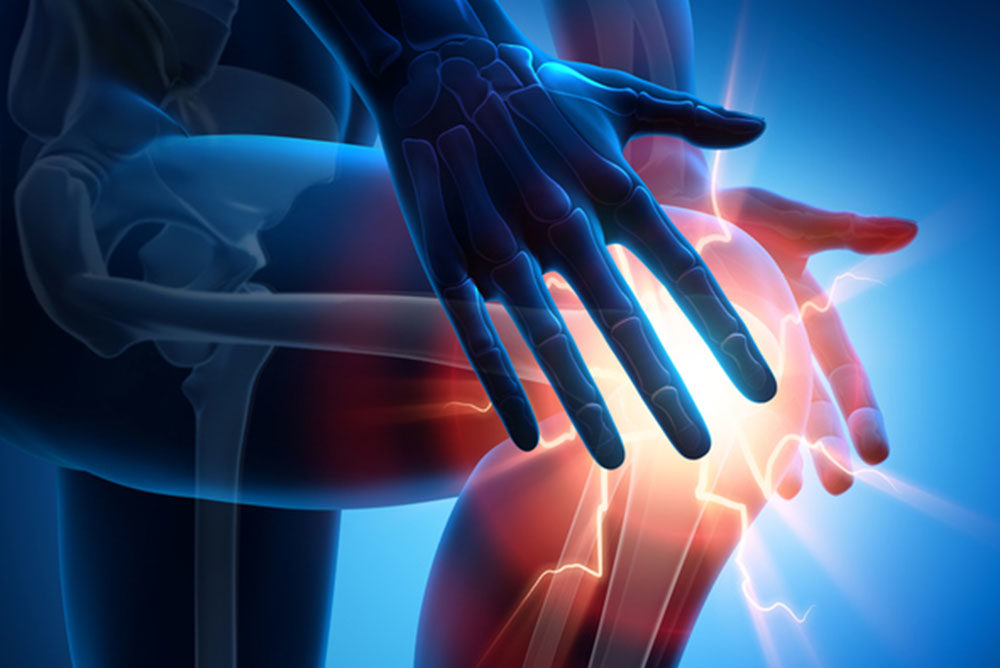
iStock
PHYSICAL THERAPISTS’ toolboxes these days sport such brands as Storz (Medical Master Pulse); Delfi (Personalized Tourniquet System); and Graston (Technique, facia manipulators), along with an array of similar devices produced under other names.
Of the three, the best results for general pain reduction come from “pulse” ESWT, for extracorporeal shock wave therapy. Although the exact mechanisms of action are unclear, high-energy sound waves from the device, which looks like an ultrasound wand, may increase pain tolerance by altering the transmission of pain stimuli.
First appearing in 1980 as a treatment to dissolve kidney stones called lithotripsy, ESWT seems to improve blood supply and spur tissue regeneration by stimulating an inflammatory response similar to the body healing itself. The waves have proved helpful for tendon pain—in the hamstring, knees, Achilles tendon and plantar fascia.
Of 384 tendinopathy patients in a Greek study, those receiving shockwave treatment reported improved functionality and quality of life as well as pain reduction immediately post-treatment and at a four- week follow-up compared to controls.
At the Mayo clinic, a once-weekly series of ESWT, lasting four to five minutes each, helped athletes “whose injuries are not responding to first-line treatments” including therapeutic exercise, explained Sports Medicine Director Jonathan Finnoff.
One drawback may be the sensation, which is described as “mild discomfort” by doctors and physical therapists but has been compared to hitting the funny bone—although that came from a veterinarian and applied to horses.
The second tool, the Delfi “tourniquet system,” creates blood flow restriction (BFR), long familiar among muscle-builders and “on the verge of becoming the next big thing in fitness,” according to Forbes.
BFR cuffs or wraps placed around a limb during exercise restricts venous blood flow to the muscles. Depriving muscle tissues of oxygen increases metabolic stress that mimics the effects of lifting heavy weights in a high-intensity workout —but occurs in BFR with lighter weights that create less strain on the joints.
By restricting blood flow—as much as 50% into an arm, 80% into a leg—BFR spurs growth in the size of muscle cells to reduce atrophy or stimulate hypertrophy in patients with osteoarthritis and osteoporosis, as well as helping those who are post-op or otherwise “deconditioned.”
For one patient with a two-inch difference in lower-thigh circumference following knee surgery, six weeks of BFR therapy shrank the difference to .75 inches— improvement that would take three to four times longer with traditional rehab, according to his Colorado physical therapist Brad Grgurich.
In a German review of more than 2,500 studies, BFR stimulated muscle growth and increased strength during both low-load training and walking for “older individuals in comparison with conventional resistance training programmes.”
Because limb occlusion varies among individuals and depends on hydration and time of day, a Doppler ultrasound assessment of limb’s occlusion pressure before applying the tourniquets can help determine how much to restrict without occluding blood flow.
Although less onerous on the joints themselves, the simulation of heavy lifting can still feel like very hard work. And unsupervised use of BFR can lead to muscle, nerve and cardiovascular damage in addition to issues like blood clots, which led a 2017 study to recommend additional research on BFR before widespread application.
Finally, the set of six stainless steel instruments employed in the Graston Technique may provide their principal advantage to physical therapists, as admitted by some, of saving their fingers —while not offering clearly proven benefits to patients.
In specialized training, PTs learn to use the Graston instruments for a “specialized form of massage/scraping the skin gently.”
Called IASTM, for instrument-assisted soft tissue mobilization, this kind of myofascial therapy may provide “a mechanical advantage for the clinician by allowing deeper penetration and more specific treatment, while also reducing stress on the hands,” according to researchers at California State University and the University of Idaho.
Neurological benefits of IASTM may result from the activation of nerve fibers and position sense organs and may include reducing pain and increasing function following soft tissue injuries.
IASTM may “stimulate connective tissue remodeling,” induce “repair and regeneration of collagen,” and result in the “release and breakdown of scar tissue, adhesions and fascial restrictions,” the researchers write. On the other hand, their review of five studies found “insignificant results and weak evidence” for IASTM.
In addition, many physical therapists and others who work on the body believe strongly in the advantages of using their fingers and hands—notably to sense when to push deeper and when resistance is too strong to ease tension as well as fibrosis.
And as tempting as any of these tool-assisted interventions might sound, the most commonly agreed-on advice for coping with pain and functional restriction linked to everything from recent injury to osteoarthritis involves regular, often uncomfortable, aerobic exercise.
“Today the more than 50 million adult Americans with arthritis are advised to seek the same 150 minutes a week of moderate exercise as everyone else,” writes Amby Burfoot in The Washington Post —with aquatic activity the least stressful for joints and muscles. Joints need movement to “swish around the fluids that deliver nutrients to the cartilage and other tissues,” Arthritis Foundation Health Director Marcy O’Koon told The Post. “Don’t push through pain. But don’t stop, either.”
—Mary Carpenter
Every Tuesday, well-being editor Mary Carpenter reports on health news you can use.

Rats, oh well, I guess we just have to keep moving.. so ironic that the advances seem to be most effective for the aging therapists hands! They’re getting old too 🙁
yes, definitely keep moving. And I do want to save those old hands: I put more trust in those who have been doing it longer and often have better ways of integrating new modalities with the good older ones. thank you!
This sounds pretty complicated. Hopefully whoever is applying any of these modalities knows what they are doing!
I agree completely: definitely ask questions about how long they’ve been doing it, etc. Thank you!!